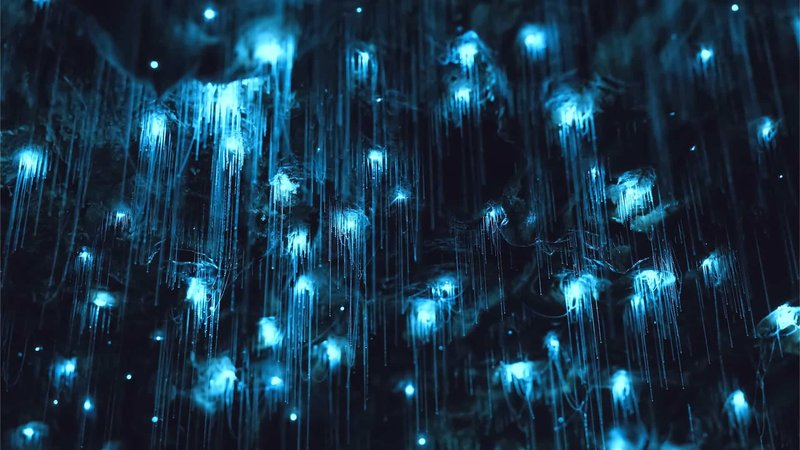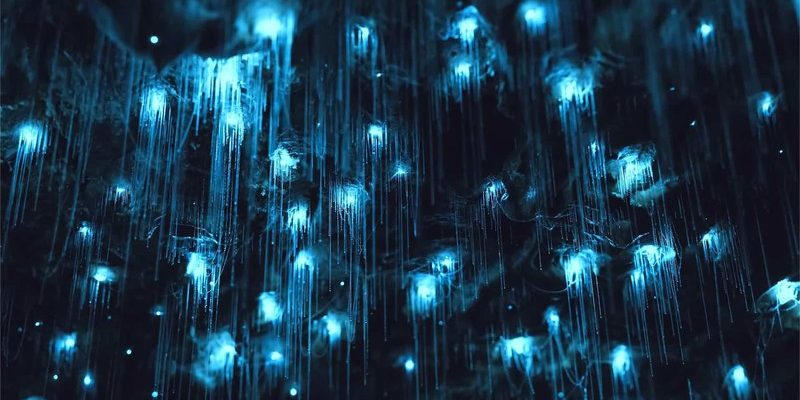
In the realm of cave ecosystems, **humidity** acts like the backstage crew of a theater production—it may not have the spotlight, but without it, the show simply can’t go on. Glow worms, which are actually the larvae of a type of beetle, rely on these moist surroundings to thrive. So, let’s dive in and explore why cave humidity matters so much for these incredible little creatures.
Why Humidity is Crucial for Glow Worms
You might be wondering, “What’s the big deal with humidity?” Well, glow worms need a moist environment to sustain their diet and life cycle. These creatures secrete a sticky silk that they use to catch food, and that silk is most effectively produced in humid air. If the air is too dry, their silk becomes less effective, and they might struggle to catch their meals—insects like mosquitoes and midges.
Additionally, humidity plays a significant role in their reproduction. Female glow worms require specific moisture levels to lay their eggs successfully. Too little humidity can lead to low hatching success, which might threaten the overall population in that area. So, maintaining the right humidity is like keeping the lights on at a concert—absolutely essential for the show to go on.
Ideal Humidity Levels for Glow Worms
So, what exactly are the magic numbers? Generally, *ideal humidity levels for glow worm habitats range between 80% and 90%*. This keeps the cave environment damp enough for their silk production and eggs to thrive. Think of it like a perfect sponge—too dry, and it’s useless; too wet, and it can’t hold onto anything.
When humidity levels dip below 80%, glow worms might start to face challenges. Below that mark, the sticky silk becomes less effective, and their chances for catching prey decrease. Conversely, if the humidity shoots above 90%, the dampness could lead to mold growth, which isn’t great for these critters either. It’s all about finding that sweet spot, similar to balancing the flavors in a dish until it’s just right.
How Humidity Affects Behavior
The behavior of glow worms can also shift based on humidity. They tend to be more active and produce more silk in higher humidity. Imagine trying to bake a cake in a dry oven versus a humid one. The humid environment helps the glow worms stay alert and efficient in catching food.
Conversely, during periods of low humidity, glow worms might conserve energy. It’s like when you feel sluggish on a hot, dry day; you just don’t want to exert yourself. The same goes for glow worms—they might dim their lights and slow down, which could affect their mating rituals and food availability.
Measuring Humidity in Caves
If you’re keen on learning more about cave humidity levels, measuring it isn’t as tricky as it sounds. You’ll want a reliable **hygrometer**, a device specifically designed for measuring humidity. There are digital and analog options available, and both can give you a good idea of the moisture levels in the air.
To get accurate readings, place the hygrometer in different spots within the cave. Areas near water sources will likely have higher humidity, while more open sections may have drier air. It’s beneficial to take readings throughout the day and night since humidity can fluctuate. Keeping track of these numbers can help in understanding and preserving the delicate balance that glow worms need to thrive.
Cave Conditions to Support Ideal Humidity
Creating the perfect habitat for glow worms isn’t just about watching the humidity; it also involves understanding other environmental factors. **Temperature** and water availability are just as important. Cooler temperatures typically mean higher humidity, so caves that maintain a stable, cool climate often provide optimal conditions.
If you’re involved in conservation efforts or simply interested in protecting these unique creatures, consider areas with natural water sources, like small streams or puddles. These water bodies help maintain humidity levels, especially during dry spells. Think of them as little oases in the cave, crucial for the glow worm’s survival.
The Role of Vegetation in Maintaining Humidity
Believe it or not, vegetation plays a key role in the humidity levels of caves. Plants, especially mosses and ferns, help retain moisture and can even raise the humidity level of their surroundings. When the air is saturated with water vapor from the plants, it contributes to the ideal environment for glow worms.
Another interesting aspect is that plants can affect the microclimate of the cave. They provide shade and help maintain cooler temperatures, which adds to the overall humidity. When protecting glow worm habitats, it’s essential to consider the surrounding flora and promote biodiversity, ensuring that the ecosystem remains balanced and healthy.
Challenges to Maintaining Ideal Humidity Levels
Unfortunately, glow worms face various threats, and maintaining ideal humidity levels can be one of them. Changes in climate and human activity can impact cave ecosystems. For instance, if a nearby water source dries up due to climate change, the humidity in the cave can plummet, leading to struggles for the glow worms.
Additionally, pollution from nearby areas can affect the moisture levels. Contaminated water can lead to changes in cave ecology, causing a negative ripple effect. It’s such a delicate balance, and understanding how interconnected these elements are is crucial to effective conservation efforts.
Conservation Efforts for Glow Worm Habitats
Now that you know how important humidity is for glow worms, you might be curious about what’s being done to conserve these mesmerizing creatures. Various organizations and researchers are focusing on protecting cave habitats to ensure they remain suitable for glow worms.
Efforts include monitoring humidity levels, preserving natural water sources, and restoring vegetation around caves. Some groups even conduct educational programs to raise awareness about the importance of these ecosystems. By advocating for sustainability and raising awareness, we can all play a part in protecting the glow worm’s enchanting world.
In closing, understanding cave humidity levels is key to appreciating and preserving the life of glow worms. Just like a perfectly balanced recipe, these tiny creatures rely on specific conditions to thrive. By being aware of their needs and advocating for their habitats, we can ensure that the magic of glow worms continues to light up the darkness for generations to come.

